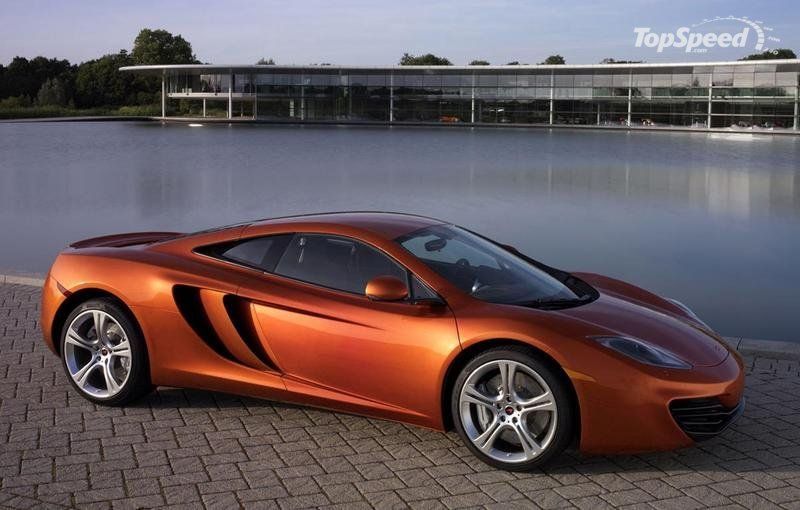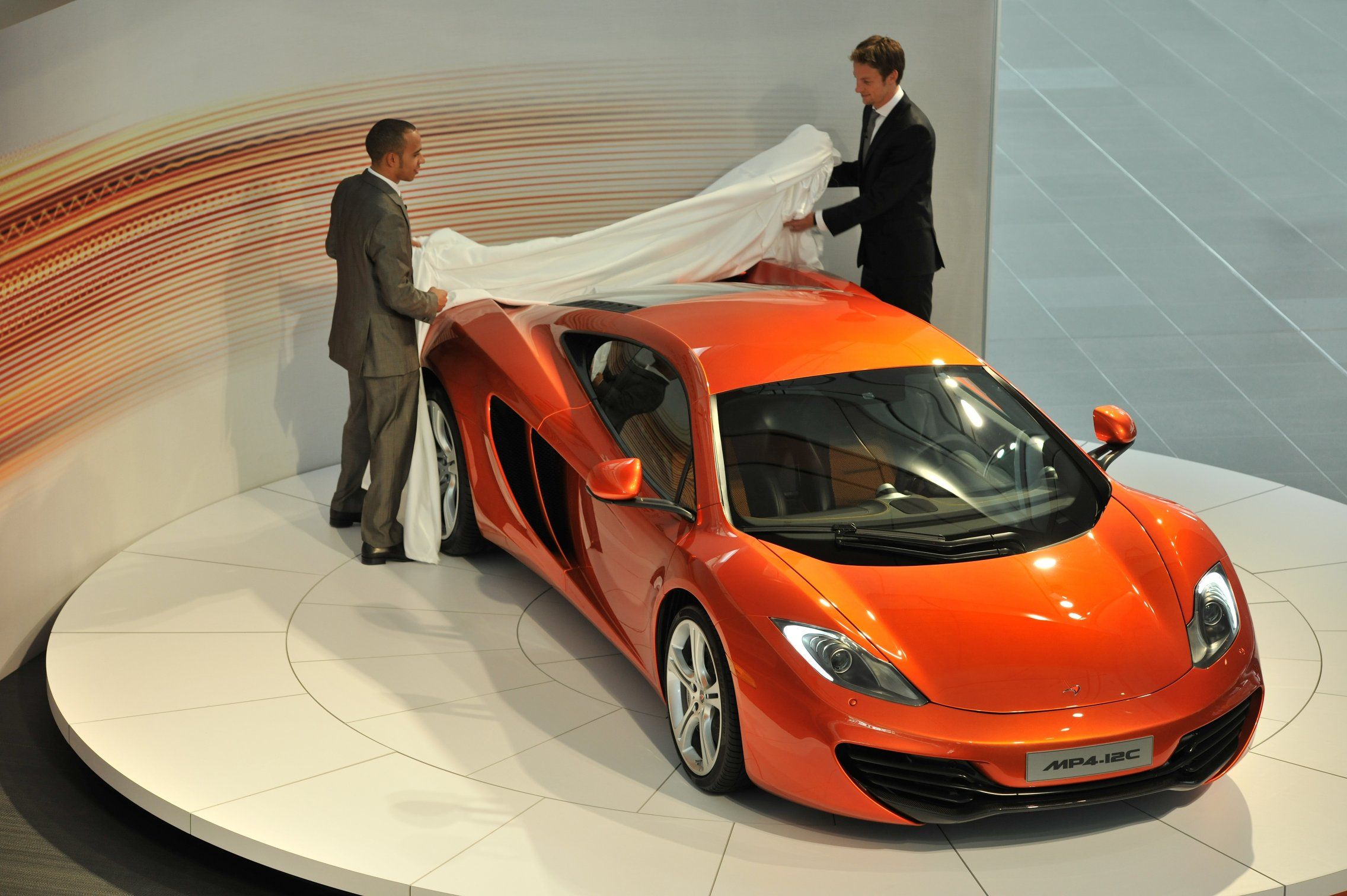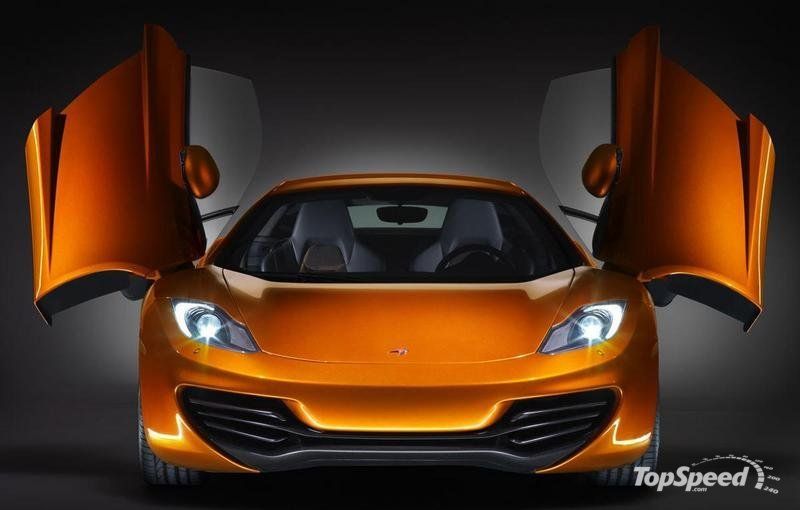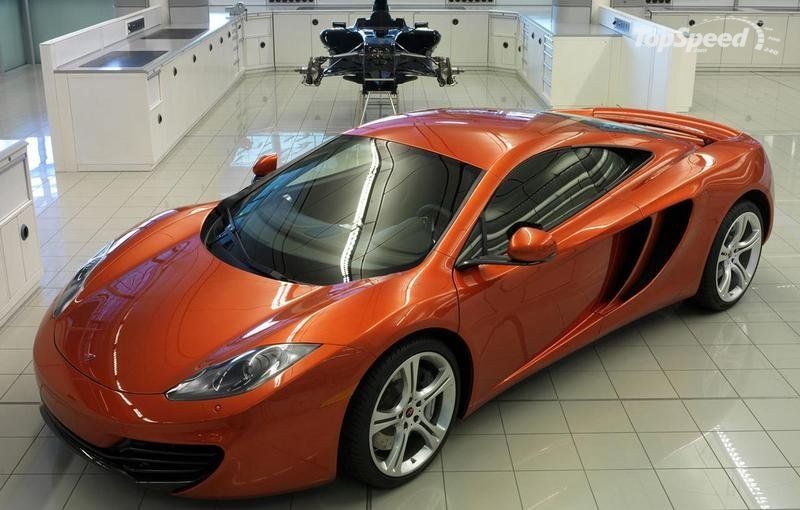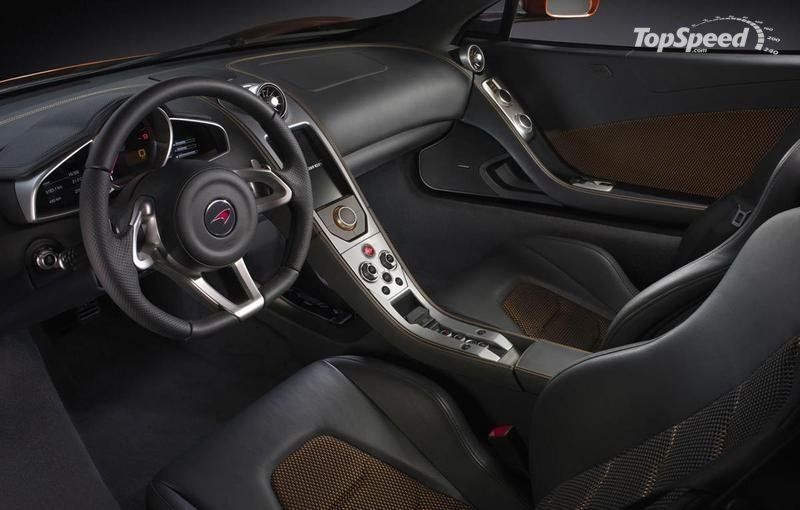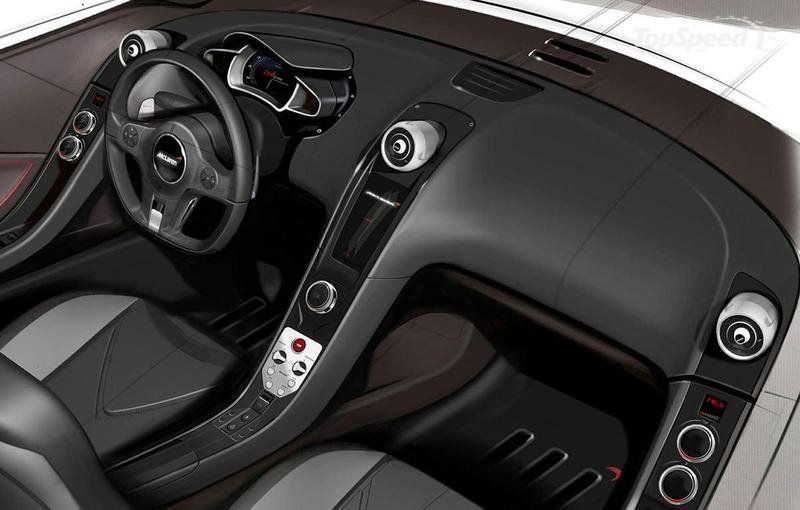Too long have we been under the German and Italian wave of performance cars. Too long have we been forced to drive, in Germany's case, their perfectly engineered soulless rocket ships. Too long have we had to drive gorgeous cars that catch fire from Italy. We want something fast, hardcore, and from an Allied nation. Britain and team McLaren to the rescue.
Let's start with the name shall we. It might sound stupid, like BMW's constant use of numbers that mean nothing to the normal person. Is the 750i better than a 760 or a 740? In this case though, the name has some serious weight behind it. The MP4 should ring a mental bell for those of you who love and follow Formula One. Every Vodafone McLaren racing car carries the name MP4 along with it. That should give us some sort of understanding as to how the new car performs.
The 12C aspect of the car isn't that historical. In fact, it's not very exciting at all. The C stands for carbon and the 12 for to McLaren’s internal Vehicle Performance Index. See, pretty boring stuff. Despite this, we are about as excited as a child during Christmas to learn more about this new McLaren.
Hit the jump to keep reading.
To try and make things a bit easier, let's just call this new car the 12C. This is a truly monumental car that has been a tad overshadowed of late. Not anymore; we aim to put it on the highest pedestal.
“McLaren is already a car maker with maturity and experience, having produced iconic cars such as the F1. The next step was to construct a range of pure McLaren high performance sports cars that are true to the company’s philosophy and reflect our position as an absolute technology and performance leader. So, when we embarked on the 12C project, we wanted to re-write the rules of sports car design. Indeed, the 12C offers performance and technology that exceeds that of the world’s most expensive and sophisticated supercars, while competing in a much more accessible market segment. And to achieve this result, we designed every component from scratch to meet the extreme goals of the 12C and avoid any compromise," aid Antony Sheriff, McLaren Automotive Managing Director.
With those stunning looks and the historical name, it's hard to expect anything less than impressive stats. The 12C is powered by an all-new 3.8-liter twin-turbocharged V8 with a dry sump and a flat-crank. The motor will produce 600 horsepower and 443 pound-feet of torque, 80 percent of which is on offer as low as 2000 rpm. Add that power, and the car's low weight at only 1400 kg, and you have one seriously quick ride. It will use a seven-speed dual clutch, seamless shift transmission. The motor will only produce around 300g/km of carbon dioxide, so the green folks should love it too.
The chassis of the 12C has welded aluminum extrusions, that will work with a one-piece carbon-fiber tub. We're talking serious engineering stuff here. McLaren believes that this machine will produce more downforce than previously thought possible. Want your neck broken, corner quickly in the 12C and it just might snap.
With all that out in the open, let's look at how the car was first thought up. It's not everyday you wake up and build a sports car like this. The concept version of the 12C, called the P11 project, has been on the drawing board since the SLR back in 2003 and the partnership with Mercedes-Benz.
The plan was to create another car with Mercedes, but the Germans decided against it, as the money just wasn't there. That spawned a whole bevy of rumors about the car's future. Will it exist, will it not? Mercedes didn't want to be a part of it for financial reasons, but that wasn't going to stop of the boys from Woking in the good ol' United Kingdom.
Out of the ashes came a 600 horsepower beauty. A car that is pretty, yet technically overwhelming. Even with those stunning looks and that typical McLaren orange paint, the car is about performance and all out power. While the look is gorgeous, it's not groundbreaking. The Ferrari 458 Italia and the Mercedes SLS AMG will be the cars made into posters and hung on walls. While those cars are in your face, the 12C is the quiet kid who sits in the back of the room, then destroys everybody on the track.
The original McLaren supercar, the F1, was designed the same way. It was created to be fast, very fast, and the styling left to be desired. It was the opposite of the Lamborghini models of that time. Engineering first, looks second.
Even if the styling was put on the back burner, the 12C is still a pretty car. It might not have the SLS doors or the Ferrari rear end, but if you see one of these on the road you will, without a doubt, be speechless.
“Many sports cars and super cars present an ‘in-your-face’, ‘look-at-me’ image that can become wearing and boorish; the ultimate backhanded compliment becomes, “…it was of its time," said Frank Stephenson, McLaren Automotive Design Director.
The design was created with a purpose and it wasn't to be pleasing to the eyes. Every fold, crease, slash, and so on were put on the car for a reason, and that reason was airflow. Those side intakes feed air into the engine and the vanes are there to turn the air. The area around the rear of the car is there to maximize airflow, they couldn't help it that it looked good. That high exhaust isn't up that high for style, it's up there to make sure that the path from the engine to the tail of the pipe is as simple as possible. The air brake is a really clever bit of kit. It doesn't use electric to push it up, that would be too old school. It uses air to push it up at speed. How clever is that? All that goodness is neat, but nothing compared to the 12C's real bling; the carbon fiber chassis. This is the first time that such a chassis has been used on a car that has a lower price tag. The entire structure only weighs 81 kg and it has been subjected to some serious testing forces. As you can obviously tell, weight was key.
The innovations keep on rolling in, as the suspension is very unconventional. Instead of a typical anti-roll bar, the 12C uses hydraulically interconnected dampers. This helps the car's tires spend more time on the ground and less time in air after hitting road imperfections.
We then come to brake steer, as system that was first used on the McLaren MP4/12 F1 car. This system uses the brakes to do the same job as a torque-vectoring differential. That will help eliminate understeer and increase corner speeds. The three-stage stability control system works with the voodoo suspension that will allow drivers to select from three modes; normal, sport, and track.
With all those unique gizmos and gadgets, the 12C interior should be more sophisticated than anything else this side of the Lexus LFA->ke2181. Well, not really. Don't get us wrong, the interior is very futuristic, but it's nothing that will make you say, "Wow." There are airbags, audio controls, and a climate control system. Of course, why would the buttons be where you would expect them to be? The climate buttons are on a pod on the driver's door, so your passenger won't adjust anything. The audio controls and touch screen navigation are in a neat LCD TV looking screen. There is even a rocker paddle mounted on the steering wheel that controls the shifting. Just wonderful.
When playing with those paddles, you might discover something different. The car features something called a Pre-Cog system, which will see the initial push on the paddle and will prime the gearbox, while the second actually shifts the car. What this means is that it will allow the driver to preselect the next highest or lowest gear by applying slight pressure to the up- or down-shift paddle.
“The 12C is all about performance,” said Sheriff. “And in McLaren, we have a very broad definition of performance. We don’t just look at the traditional one-dimensional parameters like top speed, we focus equally on useable measures such as in-gear acceleration times, braking performance in all conditions, and efficiency of power delivery combined with the lowest possible fuel consumption and CO2 emissions. Sure, 12C is very fast, but it is also the most efficient, most driveable high-performance sports car in the world.
“In the more subjective areas of road-holding, handling, comfort, driver involvement and day-to-day usability, McLaren is achieving new standards for a mid-engined high performance sports car in this sector,” he concluded.
Creating the F1 car that's piloted by Lewis Hamilton and Jenson Button must have given McLaren some serious guts to develop such a machine as 12C, because most of the stuff on this car isn't just redeveloped off of an older car, it's all-new. Even the dealerships will be revolutionary. Dealers will always have to carry a part for the car, so owners won't have to wait for it to come in.
Dealers are already opening up throughout the world. There are dealers in Switzerland, South Africa, Germany, Belgium, the UK, and in the United States to name a few locations. Those of you living in California will have the pleasure of your very own McLaren showroom on Wilshire Boulevard in Beverly Hills. Other locations in the U.S include Chicago, New York, Miami, San Francisco, and Tampa. Two others will then open in Newport Beach and Philadelphia.
McLaren isn't just creating a supercar, they are rewriting the way the supercar is made and sold. Image asking Ferrari for a replacement headlights within a few hours. We think not.
"We aim to be the best, but will leave that ultimate judgement to our first customers in 2011. Until then, we will strive to put one name at the top of the ‘most wanted’ list for buyers of high performance sports cars: ‘McLaren’," said said Ron Dennis, McLaren Automotive Chairman.

